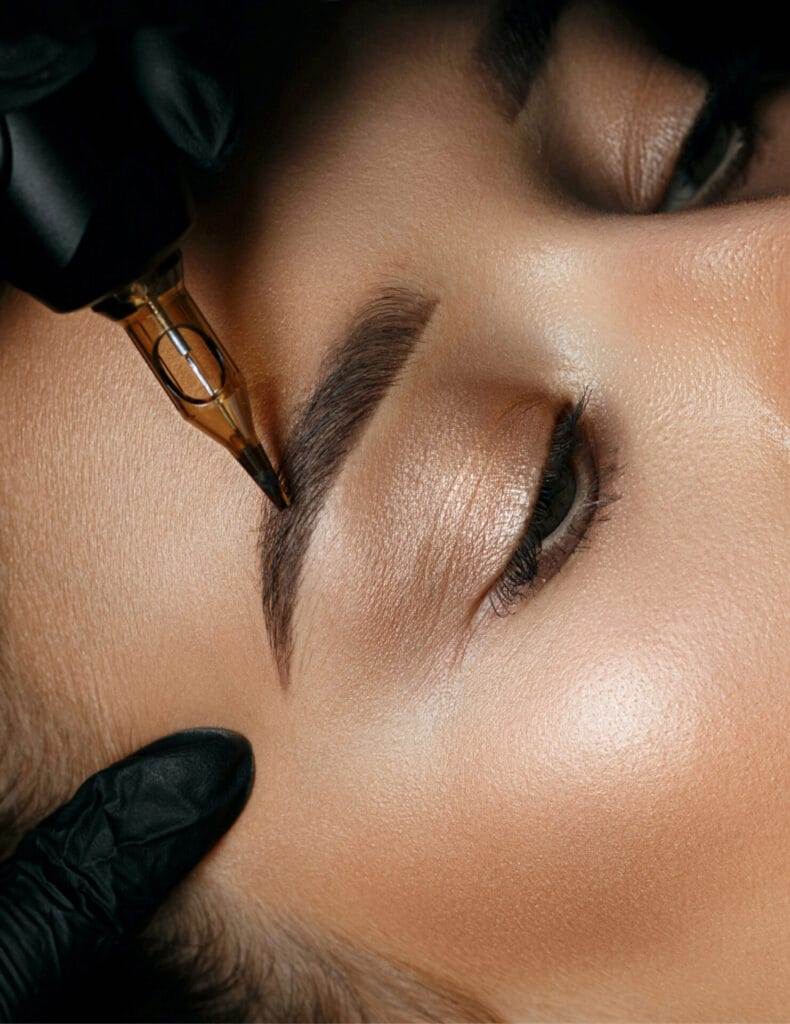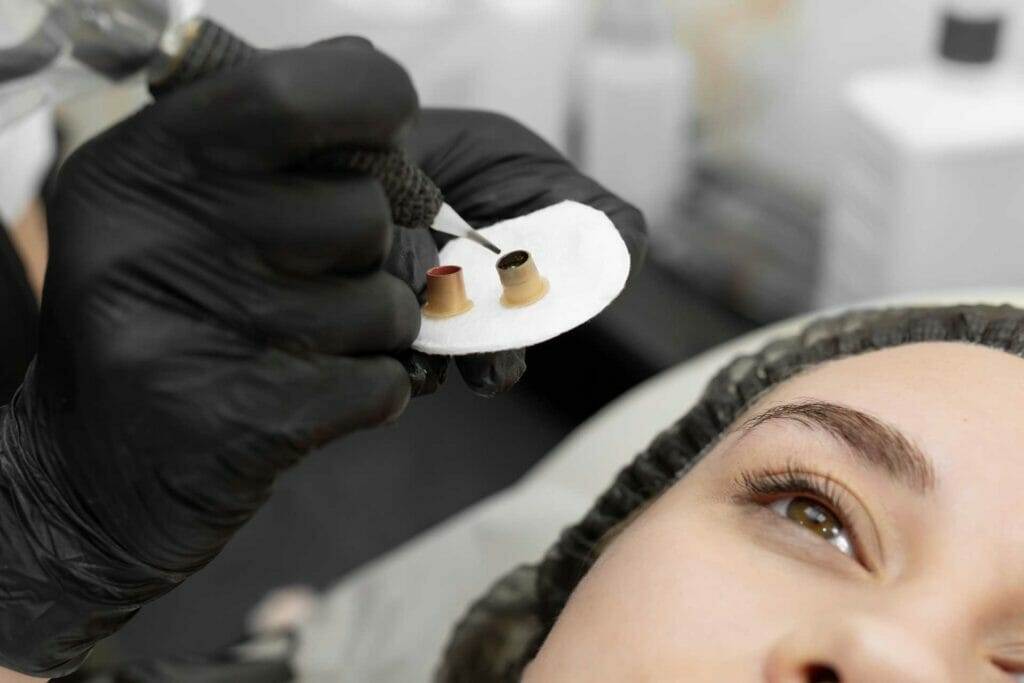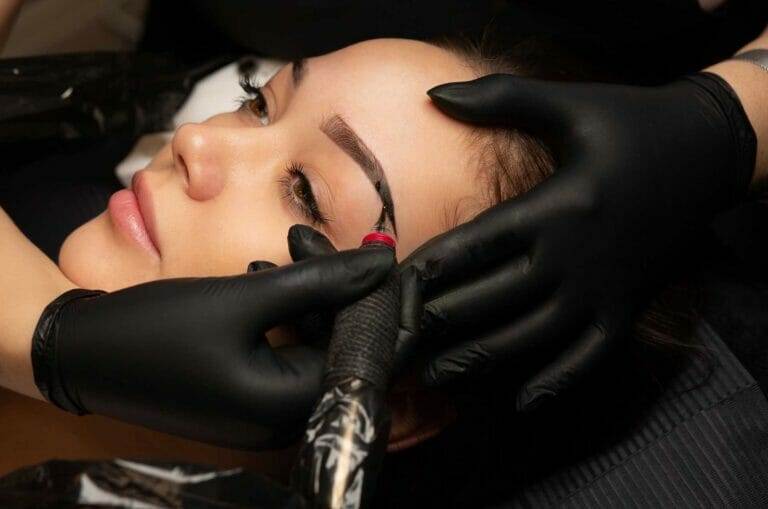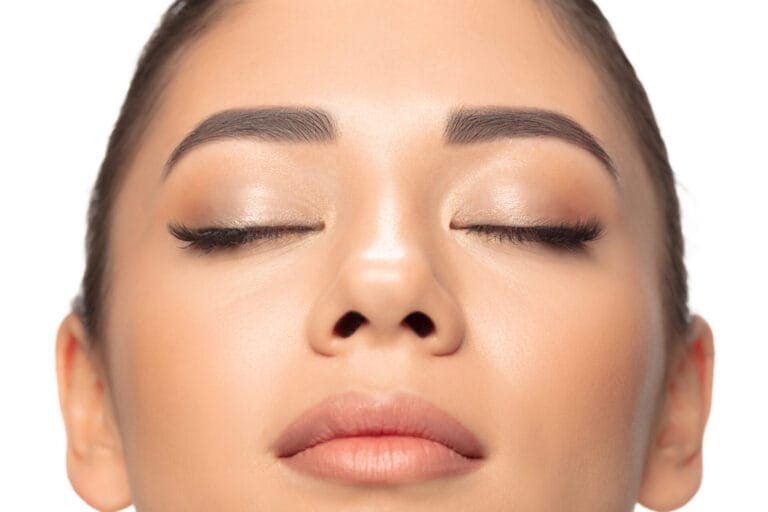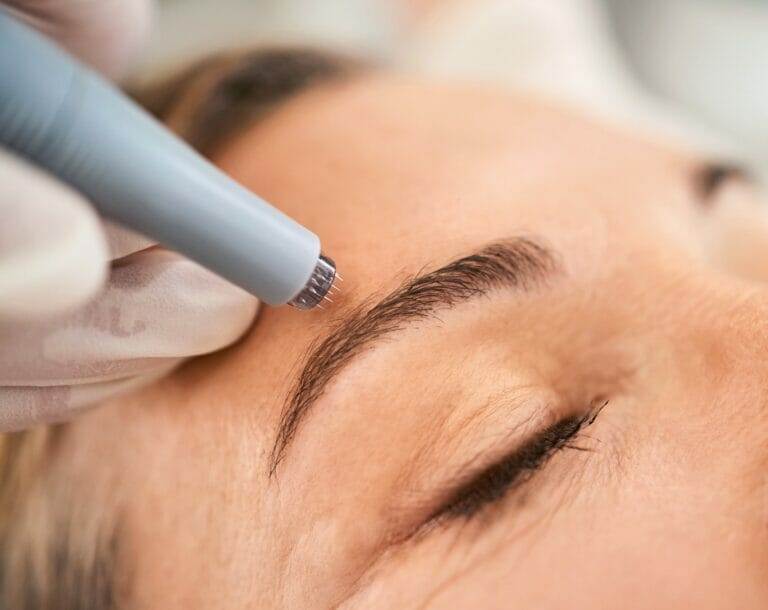Permanent makeup, also known as cosmetic tattooing or micropigmentation, is a procedure that involves the application of pigments to the skin to enhance and define certain features. It is a form of tattooing that is specifically designed to mimic the appearance of makeup. Permanent makeup has gained popularity in recent years as a convenient and long-lasting solution for those who want to save time and effort in their daily beauty routine.
The history of permanent makeup can be traced back to ancient civilizations such as Egypt and India, where it was used for various purposes including enhancing beauty and symbolizing social status. In more recent times, permanent makeup has become increasingly popular among celebrities and individuals who want to achieve a flawless and natural-looking appearance without the need for daily makeup application.
Understanding the Benefits of Permanent Makeup
One of the main benefits of permanent makeup is that it saves time and effort. With permanent makeup, you no longer have to spend hours in front of the mirror applying and reapplying makeup. This is especially beneficial for those with busy lifestyles or those who simply prefer a more low-maintenance beauty routine.
In addition to saving time, permanent makeup also enhances natural features. Whether it’s defining eyebrows, adding color to lips, or creating a subtle eyeliner, permanent makeup can help bring out your best features and create a more polished look. It can also help correct asymmetry or sparse areas, giving you a more balanced and symmetrical appearance.
Another significant benefit of permanent makeup is that it boosts self-confidence. Many people feel more confident and empowered when they look their best. Permanent makeup can help enhance your natural beauty and give you the confidence to face the world with a fresh face every day.
Furthermore, permanent makeup is an ideal solution for people with allergies or sensitivities to traditional makeup. Some individuals may have adverse reactions to certain ingredients found in cosmetics, making it difficult for them to wear traditional makeup. Permanent makeup eliminates the need for daily application of makeup products, reducing the risk of allergic reactions or skin irritations.
The Different Types of Permanent Makeup
There are several different types of permanent makeup procedures that can be done to enhance various features of the face and body.
Eyebrow microblading is a popular technique that involves creating hair-like strokes to fill in sparse or thin eyebrows. This procedure can help create a more defined and symmetrical brow shape, giving the appearance of fuller and more natural-looking eyebrows.
Eyeliner tattooing is another common procedure that involves applying pigment along the lash line to create the appearance of thicker and more defined eyelashes. This can help enhance the eyes and make them appear more awake and vibrant.
Lip tattooing is a procedure that involves adding color and definition to the lips. It can help create a more youthful and plump appearance, as well as correct any asymmetry or unevenness in lip shape or color.
Areola tattooing is a specialized procedure that is often done for breast cancer survivors who have undergone mastectomy or breast reconstruction surgery. It involves creating the appearance of a natural-looking areola and nipple, helping to restore confidence and femininity.
Scar camouflage is another type of permanent makeup procedure that can help conceal scars or skin imperfections. By matching the pigment to the surrounding skin tone, scars can be made less noticeable, giving individuals a renewed sense of confidence.
Preparing for Your Permanent Makeup Procedure
Preparing for your permanent makeup procedure is essential to ensure optimal results and minimize any potential risks or complications. Here are some steps to follow before your procedure:
1. Avoid certain medications and supplements: Some medications and supplements can thin the blood or increase the risk of bleeding during the procedure. It is important to avoid blood-thinning medications such as aspirin, ibuprofen, and certain herbal supplements for at least a week before your appointment.
2. Avoid alcohol and caffeine: Alcohol and caffeine can also increase the risk of bleeding and interfere with the healing process. It is best to avoid consuming alcohol or caffeine for at least 24 hours before your procedure.
3. Avoid sun exposure and tanning: Sun exposure can cause the skin to become more sensitive and increase the risk of complications during the procedure. It is recommended to avoid sun exposure or tanning beds for at least a week before your appointment.
4. Arrive with clean skin: It is important to arrive at your appointment with clean skin free from any makeup, lotions, or oils. This will ensure that the pigment adheres properly to the skin and allows for better results.
What to Expect During Your Permanent Makeup Procedure

During your permanent makeup procedure, there are several steps that will be followed to ensure a successful and comfortable experience.
First, a numbing cream will be applied to the treatment area to minimize any discomfort. The cream will need some time to take effect, so you may need to wait for about 20-30 minutes before the procedure begins.
Once the numbing cream has taken effect, the artist will begin the pigment application process. This involves using a small handheld device or a manual tool to deposit the pigment into the skin. The artist will work carefully and precisely to create the desired shape and color.
Depending on the procedure and individual factors, multiple sessions may be required to achieve the desired results. This is especially true for procedures such as eyebrow microblading, where multiple layers of pigment may need to be applied to create a more natural-looking result.
After the procedure is complete, the artist will provide you with aftercare instructions. It is important to follow these instructions carefully to ensure proper healing and long-lasting results.
Aftercare for Permanent Makeup
Proper aftercare is crucial for the healing process and long-term success of your permanent makeup. Here are some general aftercare guidelines to follow:
1. Keep the area clean and dry: It is important to keep the treated area clean and dry for at least 24 hours after the procedure. Avoid touching or rubbing the area, as this can disrupt the healing process and increase the risk of infection.
2. Apply ointment as directed: Your artist may provide you with a special ointment or cream to apply to the treated area. Follow their instructions on how often and how much to apply. This will help keep the area moisturized and promote proper healing.
3. Avoid certain activities: It is important to avoid activities that can cause excessive sweating or moisture on the treated area, such as swimming, saunas, or intense workouts. These activities can interfere with the healing process and cause the pigment to fade prematurely.
4. Avoid sun exposure and tanning: Sun exposure can cause the pigment to fade and increase the risk of complications. It is important to avoid direct sun exposure and tanning beds for at least two weeks after the procedure. If you must be in the sun, make sure to apply a broad-spectrum sunscreen with a high SPF to protect the treated area.
Tips for Maintaining Your Permanent Makeup
To ensure the longevity and quality of your permanent makeup, it is important to follow these tips for maintenance:
1. Use sunscreen: Sunscreen is essential for protecting your permanent makeup from fading or discoloration caused by sun exposure. Apply a broad-spectrum sunscreen with a high SPF to the treated area whenever you are exposed to the sun.
2. Avoid exfoliating products: Exfoliating products can cause the pigment to fade more quickly. Avoid using harsh scrubs or exfoliants on the treated area, as this can remove the pigment and affect the overall appearance.
3. Avoid harsh chemicals: Harsh chemicals found in certain skincare products or cosmetics can also cause the pigment to fade or change color. It is best to avoid using products that contain alcohol, retinol, or alpha hydroxy acids on the treated area.
4. Schedule touch-up appointments as needed: Over time, the pigment may fade or become less vibrant. It is recommended to schedule touch-up appointments every 1-2 years to maintain the desired color and shape of your permanent makeup.
Common Myths and Misconceptions About Permanent Makeup
There are several common myths and misconceptions surrounding permanent makeup that can deter individuals from considering this procedure. Let’s debunk some of these myths:
1. It looks fake: When done by a skilled and experienced artist, permanent makeup should look natural and enhance your features without appearing fake or overdone. The key is to choose an artist who has a good understanding of color theory and can create a customized look that suits your individual features and preferences.
2. It’s painful: While some discomfort may be experienced during the procedure, most individuals find the pain to be minimal and tolerable. Numbing creams are typically applied to the treatment area to minimize any discomfort. The level of pain can vary depending on individual pain tolerance and the specific procedure being performed.
3. It’s only for women: Permanent makeup is not limited to women. Men can also benefit from permanent makeup procedures, such as eyebrow microblading or scar camouflage, to enhance their appearance and boost their confidence.
4. It’s not safe: When performed by a trained and experienced professional using sterile equipment and following proper hygiene protocols, permanent makeup is generally considered safe. It is important to choose a reputable artist who uses high-quality pigments and follows strict safety standards to minimize any potential risks or complications.
The Cost of Permanent Makeup and How to Budget for It
The cost of permanent makeup can vary depending on several factors, including the type of procedure, the artist’s experience and reputation, and the location. On average, eyebrow microblading can cost anywhere from $300 to $800, eyeliner tattooing can range from $200 to $600, and lip tattooing can cost between $500 and $1,000.
To budget for permanent makeup, it is important to consider the initial cost of the procedure as well as any potential touch-up appointments that may be needed in the future. It is also important to factor in any additional costs such as aftercare products or consultations.
To make budgeting easier, consider setting aside a certain amount each month specifically for your permanent makeup procedure. This will help you save up over time and ensure that you have enough funds when you are ready to schedule your appointment.
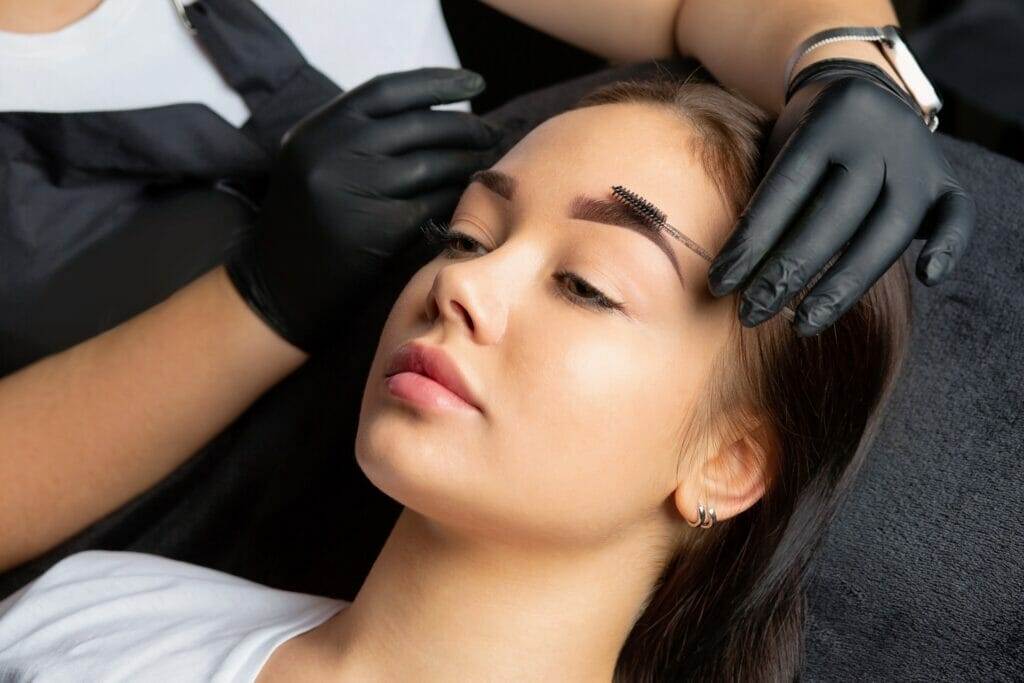
Frequently Asked Questions About Permanent Makeup
1. How long does it last?
The longevity of permanent makeup can vary depending on several factors, including the type of procedure, individual skin type, and lifestyle factors. On average, permanent makeup can last anywhere from 1 to 5 years. Touch-up appointments may be needed every 1 to 2 years to maintain the desired color and shape.
2. Is it safe?
When performed by a trained and experienced professional using sterile equipment and following proper hygiene protocols, permanent makeup is generally considered safe. It is important to choose a reputable artist who uses high-quality pigments and follows strict safety standards to minimize any potential risks or complications.
3. Does it hurt?
While some discomfort may be experienced during the procedure, most individuals find the pain to be minimal and tolerable. Numbing creams are typically applied to the treatment area to minimize any discomfort. The level of pain can vary depending on individual pain tolerance and the specific procedure being performed.
4. Can I still wear traditional makeup?
Yes, you can still wear traditional makeup over your permanent makeup if desired. However, one of the main benefits of permanent makeup is that it eliminates the need for daily makeup application. Many individuals find that they no longer need to wear traditional makeup after getting permanent makeup, as it enhances their natural features and gives them a fresh-faced look.
5. How long is the healing process?
The healing process for permanent makeup can vary depending on several factors, including the type of procedure and individual healing capabilities. Generally, the initial healing period takes about 7 to 10 days, during which the treated area may appear slightly swollen or scabbed. It is important to follow the aftercare instructions provided by your artist to ensure proper healing and minimize any potential complications.
In conclusion, permanent makeup offers a convenient and long-lasting solution for those who want to enhance their natural features and save time in their daily beauty routine. With various types of procedures available, individuals can choose the one that best suits their needs and preferences. By choosing a reputable artist and following proper aftercare, individuals can enjoy the benefits of permanent makeup for years to come.

